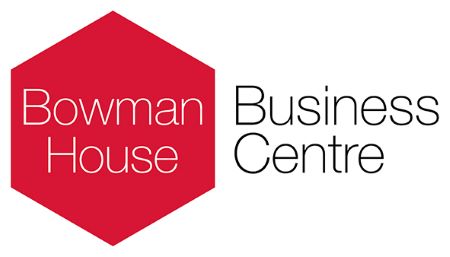In case you missed it see what’s in this section
Let's Talk
Poor Connection When Using The Phone: Causes And Solutions
From time to time, each of us is faced with a slow or completely unavailable mobile connection. This could be outside the city, in a basement, or even in an office.
If you are faced with the problem of accessing 4G in your country house or want to learn how to improve the 5G signal in the office, this article is for you.
Why Do You Have Problems With Mobile Communications?
Problems with mobile communications can arise both due to the fault of the user and the fault of the operator, as well as the characteristics of the building and the area. Let's look at the main causes of problems with mobile communications.
SIM Card In The Wrong Slot
If a phone has two SIM card slots, it is not a fact that they are the same. In older models, only one, the first one, could support 3G/4G communication. Accordingly, if you are trying to use the Internet from a SIM card inserted into the second slot, it may not actually work. (or work, but very slowly). All you need to do is swap the cards. New smartphones do not have this problem: both slots work the same.
Poor Mobile Coverage
The mobile network is heterogeneous, and even in large cities its coverage is not always complete. Moreover, this primarily concerns high-rise buildings. The thing is that antennas 30 meters high are placed inclined towards the ground. Because of this, mobile Internet users may experience problems at heights, starting from the 11th floor - radio waves physically cannot reach there. If you place the antennas vertically, radio waves will propagate without obstacles and attenuation, which can lead to overshooting (interfering with other base stations, even if they are not in the line of sight).
Thus, problems with mobile communications may appear in the area of new high-rise residential complexes. The number of subscribers and the volume of traffic are growing significantly, but not all operators have time to update base station towers
The problem is even worse in forests or deserted areas, where the distance between base stations may be too great for full coverage. In this case, there is a high probability that you will only find yourself within the coverage area of a 2G or 2.5G repeater, intended primarily for voice communications.
It's quite simple to understand:
- If a G icon appears on your phone's notification panel next to the network signal strength, then you are in the range of a GPRS network with Internet access speeds of up to 171.2 Kbps or 2G EDGE, the speed of which is limited to 474 Kbps.
- The 3G icon indicates a 3G network with speeds up to 3.6 Mbps.
- H, 3G+, H+ refers to access to the 3G+ HSPA network, which allows the user to work at speeds of up to several tens of megabits per second.
- LTE or 4G refers to fourth generation networks with speeds up to 1 Gbps.
The minimum comfortable level of Internet work is provided by 3G networks, and for the speeds familiar to any city dweller, a connection to an LTE network is required. As for the 2G and 2G EDGE networks, they are designed only for voice communication. Their network access speed is minimal.
But here everything is not so simple. The speed of Internet access greatly depends on the strength of the network signal. Notice the icon with several vertical sticks at the top of the phone screen. The more sticks shown on it, the stronger the signal reaches your phone from the base station.
Due to the low signal level, the speed of the network decreases sharply, and situations often arise when working in LTE with 1-2 sticks may be slower than 3G+ HSPA with 4-5 sticks. At the same time, smartphones by default choose faster networks in terms of standard and, most likely, will refuse to switch to 3G if there is at least some, albeit very weak, 4G signal.
Very High Network Load
Problems with the Internet can manifest themselves even when the signal level of the mobile network is more than sufficient. This is especially noticeable on holidays and in crowded places (concerts, football matches, etc.).
This is due to the fact that the operators’ equipment is designed for a certain load and malfunctions when people call up en masse.
How to Solve The Problem With a Poor Mobile Signal?
If you want to improve the 3G or 4G signal in a country house or the 5G signal in the office, the most effective solution is to use a mobile signal booster.
The mobile signal booster is a bi-directional amplifier that links the external antenna to the built-in antenna. Simultaneously with amplification, the signal shape is corrected. Mobile signal boosters are always installed together with external and internal (or several internal) transceiver antennas.
The external antenna receives signals from the base station, the booster transmits them in amplified form to the internal antenna, which, in turn, transmits them to the subscriber’s telephone set (modem or router). The response signal from the subscriber's device is received by the built-in antenna, amplified by the booster, and transmitted by an external antenna to the base station.
Using a booster is advisable in two cases: to obtain stable communication in places with poor reception (for example, in rural areas) and to expand mobile coverage to premises or territories where coverage problems are caused by the terrain, location of the premises (basement) or semi-basement premises ) or building structures.
In the first case, the effect is achieved mainly due to the high location of the external receiving antenna and its precise directionality, and in the second case, the decisive role is played by the location of the internal antenna (or several antennas) in the direct line of sight of subscribers' mobile phones (or other devices, such as modems or routers, which work on mobile networks). The use of boosters is the main way to provide mobile communications in underground structures, such as basements or semi-basements (offices, shops, etc.) and the lower levels of shopping centers, underground parking lots, etc.
Conclusion
With the help of a booster, you can strengthen and improve both voice communications and mobile 3G/4G/5G Internet in a city apartment, country house, office, basement, etc. If you want to achieve high-quality communication without missed calls with good audibility and a reliable signal from Vodafone, EE, Virgin, Tesco, or other popular British operators, we recommend contacting UCtel, which provides services to improve mobile signal in different areas.
Weather in Swindon
Listings





















